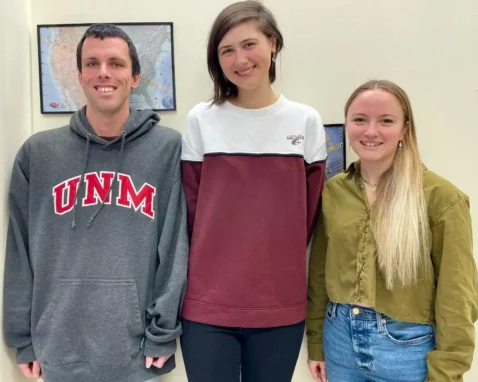Research
/https://siu.edu/search-results.php
Last Updated: May 20, 2025, 02:00 PM
Noninvasive Ground Penetrating Radar Investigation of Fallicambarus fodiens Subsurface Habitations
Zachariah Seaman, Harvey Henson
Abstract: Ground penetrating radar (GPR) is a geophysical technique that uses electromagnetic energy to image and identify subsurface objects and structures. This methodology has been used in areas such as geology, archaeology and engineering; however, recent research has applied this geophysical method within the zoological community. Several studies have discussed the utility and benefit of using GPR to image wombat burrows, badger setts, gopher tortoise burrows, and pocket gopher tunnels. Our team sought to determine if subsurface structures constructed by burrowing crayfish could be imaged noninvasively, despite their comparatively smaller burrow sizes. In previous research, imaging crayfish burrows was a challenge when collecting data in clay derived soils. However, given the proper timing of rainfall and ground water infiltration, imaging of crayfish related structures in silt loam and clay soils is possible. Our studied species, the Digger Crayfish (Fallicambarus fodiens), was located and observed in southern Illinois, and 3D GPR scans were conducted and collected. The preliminary data show various subsurface anomalies where crayfish burrows (i.e. crayfish chimneys) were observed above ground. These anomalies were interpreted as subsurface structures created by crayfish activity.
A Predictive Early Intervention Metric for Remedial and Gateway Mathematics Courses
Mark Amos, Gregory Budzban, Mary Wright, Heather Jaffe
Abstract: Early intervention strategies at the university level are becoming increasingly prevalent to aid student retention efforts. For these strategies to become optimal, they must be accompanied by precise data analysis tools to help focus limited resources precisely where these resources can most effective. Research indicates that gateway university math courses, including remedial math courses, are one of the most critical paths that students must negotiate to be successful and emerge with a degree. In this paper, we present an easily calculated early-intervention metric implemented in our gateway math courses. In addition, we present data indicating it is highly predictive of eventual student success and/or the lack of that success in these courses. Finally, we discuss how this data will be used to craft more effective student success programs at Southern Illinois University.
Crossroads Eclipse Research Workshop
Organized by Stephen Gariepy, Rockette Jaros, Phoenix Jahn
On April 8th 2024, Southern Illinois University Carbondale hosted the Crossroads Eclipse Research Workshop (CERW) during our second Total Solar Eclipse Event on campus. Teams from across the country submitted research abstracts, presented their projects in presentations just before the eclipse event, and carried out their research on the day of the eclipse that included three high altitude ballooning projects and one survey of public responses from visiting participants during a large public outreach event for the eclipse on campus. Three Ph.D. students from the University of New Mexico, including SIUC Saluki graduate and Carbondale native Alex Apgar were one of the teams.

